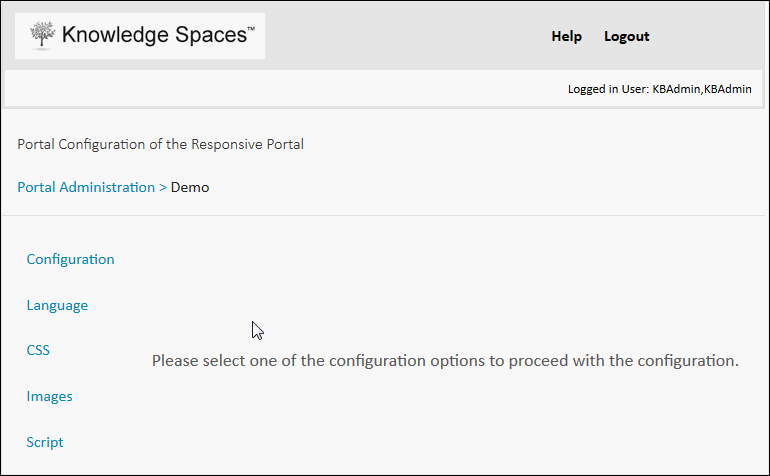Configuring a Portal
Configuring a Portal
A typical Portal comprises the following modules:
-
Home: With widgets for searching, browsing, displaying important information and
providing access to frequently referenced articles. -
Articles: With search results displayed as a list of article titles.
Articles can be files of any of the multiple formats permitted by Knowledge Spaces™.
Users also have the option to add their preferred formats to Knowledge Spaces™. -
Browse: With content for browsing and facility for searching within
categories and sub-categories. - Solution Finders: Self-help steps to resolve known issues in Q&A sequence.
The Portal Configuration > Portal Administration window lists the configurable options that control the portal’s user interface.
See Figure "Portal Configuration Window". Each option represents an area of the portal.

These areas are managed by settings in the files pertaining to the 5 options.
Table " Portal Configuration Areas and Articles" describes the properties that can be configured per option.
|
Area - option |
To Configure |
|
Configuration |
The overall portal settings stored in the built in xml file. This option must be used as part of adding a new portal. |
|
Language |
The text-strings in the portal UI. |
|
CSS |
Style definitions of the 7 modules in a typical portal: Article, Browse, Foundation, Home, Portal, Search and Solution Finder. |
|
Script |
Any JavaScript based action that users prefer to run in a portal. |
|
Images |
Graphic images users wish to place on the portal. |
Users can select an option to make changes to the respective area.
